 Crime
Crime  Crime
Crime  Movies and TV
Movies and TV 10 Most Influential Fictional Objects in Cinema History
 Our World
Our World Top 10 Real Almost‑Cities That Never Materialized
 Technology
Technology 10 Unsettling Ways Big Brother Is (Likely) Spying on You
 Music
Music 10 Chance Encounters That Formed Legendary Bands
 Space
Space 10 Asteroids That Sneaked Closer Than Our Satellites
 Sport
Sport The 10 Least Credible Superstars in Professional Sports
 Animals
Animals 10 Strange Times When Species Evolved Backward
 Facts
Facts Ten Unexpectedly Fascinating Facts About Rain
 Crime
Crime 10 Dark Details of Australia’s Gruesome Unsolved Wanda Murders
 Crime
Crime 10 Incredible Big-Time Art Fraudsters
 Movies and TV
Movies and TV 10 Most Influential Fictional Objects in Cinema History
 Our World
Our World Top 10 Real Almost‑Cities That Never Materialized
Who's Behind Listverse?

Jamie Frater
Head Editor
Jamie founded Listverse due to an insatiable desire to share fascinating, obscure, and bizarre facts. He has been a guest speaker on numerous national radio and television stations and is a five time published author.
More About Us Technology
Technology 10 Unsettling Ways Big Brother Is (Likely) Spying on You
 Music
Music 10 Chance Encounters That Formed Legendary Bands
 Space
Space 10 Asteroids That Sneaked Closer Than Our Satellites
 Sport
Sport The 10 Least Credible Superstars in Professional Sports
 Animals
Animals 10 Strange Times When Species Evolved Backward
 Facts
Facts Ten Unexpectedly Fascinating Facts About Rain
 Crime
Crime 10 Dark Details of Australia’s Gruesome Unsolved Wanda Murders
10 Facts and Fibs About Pink Floyd
Pink Floyd are one of, if not the most, well-known rock bands of the progressive rock genre, capturing the essence of lengthy instrumental passages and complementing them with memorable vibes and clear lyrics. Their concepts were compelling, from early psychedelic eccentricities to the formation of a concept album. They were shaped by Barrett’s inventiveness, Water’s writing skill and passion, Gilmour’s affection for chords and yet simplicity, Wright’s compositional knowledge, Nick Mason’s resourcefulness, and the numerous jazz influences they were inspired by and would frequently come back to. This list attempts to highlight some relatively unknown facts about Pink Floyd as well as addressing myths about the band. The list is in an order deemed relevant.
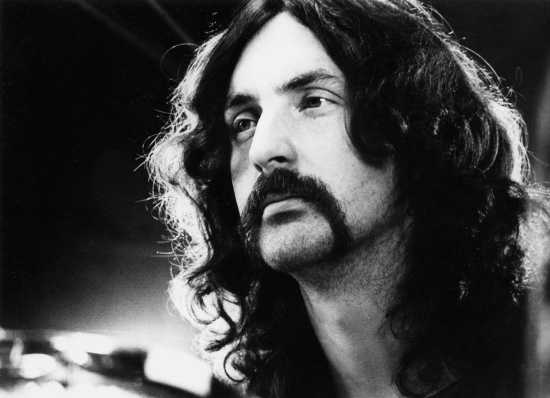
Nick Mason is the longest running member of Pink Floyd, from the Barrett era to the times of the dehydrated Floyd (i.e. without Roger Waters). In his time with Pink Floyd he rarely ventured out of his comfort zone of percussive instruments, taking failed violin lessons and providing special effects and sounds. But how did the band acquire him as a drummer? According to Mark Blake, author of “Comfortably Numb: The Inside Story of Pink Floyd,” Nick Mason was looked well upon as a drummer because he could provide the funds and transport to buy instruments and get them to gigs. Despite this oversight by the band, Mason proved to be an effective drummer, and contributed to the composition of such songs as Time, Echoes, and Speak to Me (solely credited to him). His voice is also featured on the track One of These Days.

Associated with two similar quotes, the song Any Colour You Like from Dark Side of the Moon seems to reference Henry Ford’s quote: “You can have it any color you like, as long as it’s black.” While the title’s concept does concern the lack of choice in the modern world, the origin of the title does not come from Henry Ford’s quote, it comes from an observation Roger Waters made while living in Cambridge. As the inspiration for this list this excerpt was and can be found in an essay titled “Which One’s Pink?” by musicologist Phil Rose.
“In Cambridge where I lived, people would come from London in a van – a truck – open the back and stand on the tailboard of the truck, and the truck’s full of stuff that they’re trying to sell. And they have a very quick and slick patter, and they’re selling things like crockery, china, sets of knives and forks. All kinds of different things, and they sell it very cheap with a patter. They tell you what it is, and they say ‘It’s ten plates, lady, and it’s this, that, and the other, and eight cups and saucers, and for the lot I’m asking NOT ten pounds, NOT five pounds, NOT three pounds . . . fifty bob to you!’, and they get rid of this stuff like this. If they had sets of china, and they were all the same color, they would say, ‘You can ‘ave ’em, ten bob to you, love. Any color you like, they’re all blue.’ And that was just part of that patter. So, metaphorically, ‘Any Colour You Like’ is interesting, in that sense, because it denotes offering a choice where there is none. And it’s also interesting that in the phrase, ‘Any color you like, they’re all blue,’ I don’t know why, but in my mind it’s always ‘they’re all blue,’ which, if you think about it, relates very much to the light and dark, sun and moon, good and evil. You make your choice but it’s always blue.”
In addition to the title of the song, the work in progress had various names, such as Scat or Scat Section, and has also been known as Breathe (2nd Reprise) due to its similar beat and chord sequence.
Staying on the topic of what is considered to be Pink Floyd’s magnum opus, Dark Side of the Moon makes use of voices throughout the album. These voices were generated by questions Roger Waters had written up on cue cards and were subsequently asked to roadies, doormen, members of the band Wings, and anyone available at Abbey Road. The approximately twenty questions ranged from “When was the last time you were violent and were you in the right?” to “What does the phrase ‘The Dark Side of the Moon’ mean to you?” The laughter that can be heard on Speak to Me and Brain Damage is that of Peter Watts, a road manager for Pink Floyd. In addition to the voices, at the end of the album, faint music can be heard, which is presumed to be an instrumental version of Ticket to Ride by the Beatles in the background. It has been proposed that while recording doorman Jerry Driscoll’s response (“there is no dark side of the moon really, as a matter of fact it’s all dark”) that somewhere in Abbey Road, Ticket to Ride was playing and was picked up by the microphones.
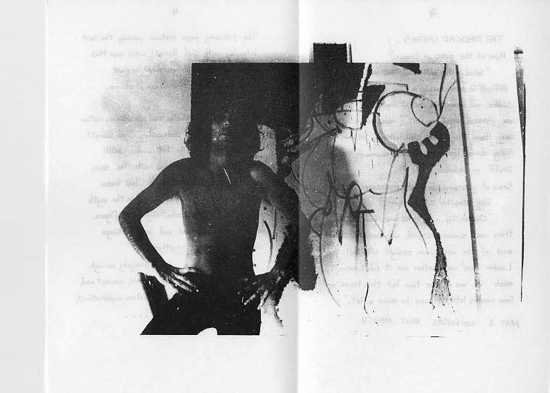
Pioneering the Pink Floyd’s sound, Barrett has widely been viewed as a musical genius for his contributions to the 1960s’ underground psychedelic scene. Little seems to focus on the man behind the music aside from his mental meltdown that ultimately led to the band abandoning him while on the way to a gig in 1968. Slowly, he reverted from Syd Barrett to his given name of Roger Barrett as he slipped into ever-increasing obscurity after departing the band. He would continue to release two solo albums with the help of David Gilmour, but eventually succumbed to a private life in Cambridge. Media outlets and fans sought him out in the later years of the Floyd, a concept that Barrett did not understand; he lived firmly in the present and did not take advantage of his past. Becoming more aware of the materialism that surrounded his artistic creations as he tried to live as privately as possible, he began to practice a form of self-destruction on his artwork.
Barrett himself had studied and practiced with paint, ink and pencil while in the band’s oldest incarnations. He would continue this throughout his time with Pink Floyd and after his era as front-man. With a strong disinterest in materialism and utter disbelief behind why people sought him out, he continued painting and creating works of art with a new-found method to deal with the clamor. He took on a ritual of photographing his completed works and then destroying the canvas, sometimes by burning his own work. As the metaphor that it unintentionally is for the development of the band, Barrett has managed to encapsulate the aspect of how he deals with the pressure of attention and demand in the industry (and earlier in time, the presence of drugs) with this damaging and brash act. [Source] http://www.sydbarrett.com/biography.htm
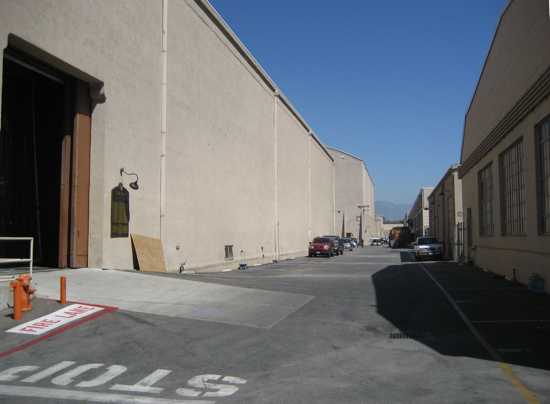
Pink Floyd’s album art is as legendary as the band itself, addressing the themes in their music with visuals as impressive as the content itself. Gerald Scarfe and Storm Thurgeson, two artists often associated with Pink Floyd, are behind much of the 1970s era Floyd artwork. Scarfe drew content for The Wall album and Thurgeson designed the album artwork behind The Dark Side of the Moon and Wish You Were Here. On the DSOTM’s iconic sleeve is a prism that represents the band’s stage lighting, the record’s lyrical themes, and keyboardist Rick Wright’s request for a simple and bold design. Of the seven designs presented to the band, the prism was unanimously chosen. As the band could afford to be pickier however, things became more complicated.
Wish You Were Here’s cover image consists of two businessmen meeting in the street, greeting each other with an empty handshake, one man on fire. The image was inspired by the idea that people tend to conceal their true feelings, for fear of “getting burned.” This was a common phrase in the music industry, used often by artists denied royalty payments. In the image, two stuntmen were used, one dressed in a fire-retardant suit covered by a business suit. His head was protected by a hood, underneath a wig. The photograph was taken at the Warner Bros. studios in Los Angeles. Initially the wind was blowing in the wrong direction, and the flames were forced into the stuntman’s face, burning his mustache. This was easily remedied, however, with the two stuntmen changing positions. The photograph was later reversed.
For the Animals’ cover image, they were careful with how they planned to orchestrate a pig on the wing. After commissioning a German company Ballon Fabrik (who had previously constructed Zeppelin airships) and Australian artist to build a porcine balloon, known as Algie, the balloon was inflated with helium and maneuvered into position with a trained marksman ready to fire if it escaped. Unfortunately, inclement weather delayed work, and the band’s manager neglected to book the marksman for a second day. The balloon, obviously testing Murphy’s law, broke free of its moorings and disappeared from view. It landed in Kent and was recovered by a local farmer, who was furious that it had “scared his cows.” The balloon was recovered and filming continued for a third day, but as the early photographs of the power station were considered better, the image of the pig was later superimposed onto one of those.
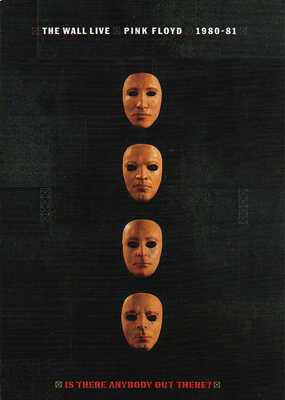
This is a short summary of a greater and much more in-depth analysis of the album The Wall and its many moving parts, courtesy of Bret Urick. While the album itself is full of symbolism, literary devices, themes and other items of significance – hammers, bricks, walls, worms – the song Another Brick in the Wall, Part 2 is full of oxymoronic and contradictory statements throughout despite its unifying stance against the way institutions stifle creativity in today’s classrooms. As Waters, Wright, and Gilmour sing a choir of restless schoolchildren to rebel against the harsh and cynical treatment of their teachers, there is a certain antithesis in the air that is apparent in the lyrics.
While fighting for individuality, the lyrics of Another Brick in the Wall, Part 2 ironically are saturated with references to conformity. There is no ‘I’, or singular driven character as with the rest of the album, there is a ‘we.’ This plurality is identity-robbing, as evidenced by the kids’ actions while under the teacher’s rules and while ransacking the school in the film based on the album. The children in the second verse sing lyrics of personal revolution, yet it is accompanied with their symmetrical lockstep rhythm, both musically and physically. Notwithstanding their rebellious tendencies, they have become as comparable as when they were clones of one another. Moreover, one could delve into the effects of mass psychology and the pressure from amongst peers to contribute to the violence and chaos that is the literal tearing-down-of-the-school-walls. It is a momentary victory for Pink in his struggle against his figurative wall, which explains the expressive guitar solo amidst the rigid disco structure of the song.

Most agree or are of the opinion that Syd Barrett had a breakdown in early 1968 due to the increasing notoriety of the band and his drug use. Rob Chapman, author of “Syd Barrett: A Very Irregular Head,” however, argues that Syd’s madness was a misunderstanding of his artistic intent. He claims the motive behind the other band members abandoning Syd is that when the band was on the verge of becoming financially successful, Barrett wanted to turn to a different form of sonic experimentation. He attributes Barrett’s actions (such as playing one untuned string during a whole performance) as acts of defiance against the band members who disagreed with him.
Chapman takes it even further by analyzing Syd’s Pink Floyd songs and work from his solo years. He reasons that had Syd had a mental breakdown, that his writing would have suffered as much as he had. Like in his years with Pink Floyd, Chapman finds references and quotes spread throughout, from Huff the Talbot and our Cat Tib (Mother Goose rhyme), Thomas Nashe’s Summer’s Last Will and Testament (an Elizabethan masque play), Shakespeare’s King Henry VI Pt. 1, Kenneth Grahame’s The Wind In The Willows, poems from: Anonymous (Mr Nobody), John Clare (Fairy Things), Sir Henry Newbolt (Rilloby-Rill) and William Howitt (The Wind in a Frolic) – all in the song Octopus from the album The Madcap Laughs. How near or how far into this we delve, his music remains influential.
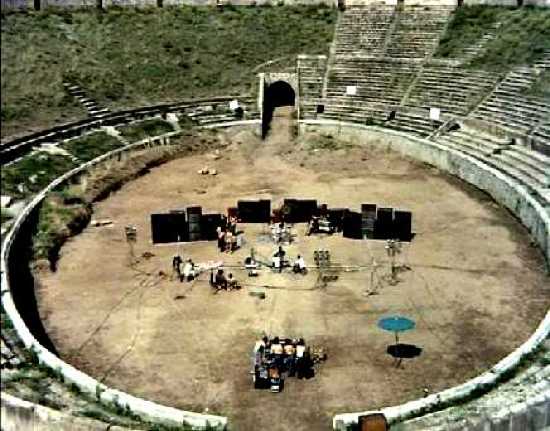
In 1972, Pink Floyd released a live performance album recorded from the amphitheater of Pompeii and a studio in France. While the location of Pompeii’s amphitheater without an audience served as an excellent statement against the live recordings of the time in which bands were shown alongside their adoring fans, it most importantly was symbolic of the history of Pompeii.
The initial idea behind Live at Pompeii wasn’t Pompeii at all, but was, as conceptualized by the director, combining the Floyd’s music with contemporary art. In a meeting with David Gilmour and the band’s manager the band declined this idea, agreeing to talk about it at a later date. Adrien Maben, the director, went on holiday to Italy in early summer 1971. It was in Pompeii that Adrien Maben lost his passport, and retracing his steps, was surprisingly let back into the ancient city. There is no better way to sum up the spirit of the Live At Pompeii recordings than what Maben described seeing in the empty amphitheater:
“I returned alone, retracing my steps along the empty streets of Pompeii, back to the amphitheater of stone walls and seats.
“It was strange. A huge deserted amphitheater filled with echoing insect sounds, flying bats and the disappearing light which meant that I could hardly see the opposite side of this huge structure built more than two thousand years ago.
“I knew by instinct that this was the place for the film. It had to be here. It somehow all came together that evening in the ancient city. Film the empty amphitheater, resurrect the spirit of Pompeii with sound and color, imagine that ghosts of the past could somehow return.”
It is a complete myth that Italian authorities would only let Pink Floyd play in Pompeii as long as there wasn’t an audience; the Soprintendenza of Naples (the official board that controls the site of Pompeii) was skeptical of a rock group playing at a site of cultural value, but the idea that there would be no audience was not imposed by the Soprintendenza.
The Publius Enigma is a mystery surrounding the Division Bell album, and is suspected of being both an early example of a viral marketing campaign and a puzzle that was eventually abandoned by its creators. Whether or not the enigma is an officially solvable puzzle still remains unclear but has been confirmed by Mason in his book “Inside Out: A Personal History of Pink Floyd” as being a marketing ploy of EMI and that ‘Publius’ was not a fictitious spokesperson for the band, but rather, an actual person coordinating an orchestration of events geared to stir and stimulate Floyd fans for the Division Bell Tour.
Publius promised an unspecified reward for solving the riddle and further claimed that there was an enigma hidden within the artwork, music and lyrics of the album. Outcries from skeptics soon followed, only to be shushed when Publius affirmed his appearance at a live venue: “Monday, July 18, East Rutherford, New Jersey. Approximately 10:30pm. Flashing white lights. There is an enigma.” Sticking to his promise, the words ENIGMA and PUBLIUS appeared in bold white lights during the song Keep Talking. Further authenticating Publius’s existence during the televised and recorded concert at Earl’s Court, London, the word ENIGMA was projected onto the backdrop during the song Another Brick in the Wall, Part 2. On the P•U•L•S•E DVD of that concert, extra markings were also added with the clue L = mc², only to be quickly overlaid with E = mc².
Adding to the validity and perpetuation of the Publius Enigma are further clues from Pink Floyd paraphernalia: “Publius Enigma” can be heard spoken just before the song One of These Days on the 2003 DVD release of Pink Floyd: Live at Pompeii. Page 13 of the The Division Bell’s CD booklet contains an anagram of the word “enigma,” hidden in the third column from the right of the lyrics to Wearing the Inside Out. The following are wild and often irrational associations to other significant events, but keep in mind this was EMI’s brainchild.
“The page numbers of The Division Bell’s CD booklet are written in various languages and printed on silhouettes of the head statues shown on the cover of the album. Page 11 shows two head silhouettes. Printed on either one is the German word for eleven, ‘elf,’ resulting in ‘elf elf,’ or, ‘eleven eleven.’ The trailer for the 2009 film 11:11 features the song High Hopes. High Hopes is the 11th track on The Division Bell. The release date of David Gilmour’s On An Island, March 6, 2006, is exactly eleven months and eleven years after the U.S. release date of The Division Bell, April 5, 1994.
On June 11, 1994, Publius made his first enigma post to the Pink Floyd newsgroup. Eleven years later, on June 11, 2005, Roger Waters, David Gilmour, Nick Mason, and Richard Wright agreed to reunite as Pink Floyd for Live 8. During the broadcast (and as seen on the Live 8 DVD), the band took the stage just shortly after 11:00 p.m., and by 11:11, Pink Floyd were playing together as a four-man lineup for the first time in twenty four years.”
Dark Side of the Rainbow, or the Dark Side of Oz, is an alleged purposeful synchronization (though sometimes claimed as an unintentional collaboration of creative souls) of the album The Dark Side of the Moon with the film The Wizard of Oz. The rumors surfaced around 1994 that the album was a soundtrack for the movie, with connections being made between actions by the characters and lyrics on the album. For instance, Dorothy balances on a tight-rope fence during the line “balanced on the biggest wave” in the song Breathe and she begins to jog when the words “no one told you when to run” are sung during Time. Tracks also transition when scenes change, and songs such as The Great Gig in the Sky play for the entirety of Dorothy’s house caught in the Kansas twister. The culmination of the lion’s second roar concludes with a heartbeat, a tin man, and the previously mentioned faint music, making for quite a convincing argument for those who are compelled to believe that this is a stroke of Floyd genius. The members of the band deny the claims however and the producers recall no mention of the movie during recording of the album.
Another interesting synchronicity (a phenomenon in which coincidental events “seem related but are not explained by conventional mechanisms of causality,” as explained by Carl Jung) is 2011: a Pink Floyd Odyssey. The final segment, Jupiter and Beyond the Infinite, is of a similar length of Pink Floyd’s song Echoes. Stanley Kubrick originally offered Pink Floyd a part producing the music behind the film, but Waters would decline as he was trying to distance the band from the space-rock genre. The theory from fans is that after seeing Kubrick’s masterpiece, they (or Waters individually) regretted missing out on the offer and set out to create a piece of music that would fit the movie. While there are parallels to Dark Side of the Rainbow, such as scenes changing with the music, it is ultimately a lesser journey in coincidence.








